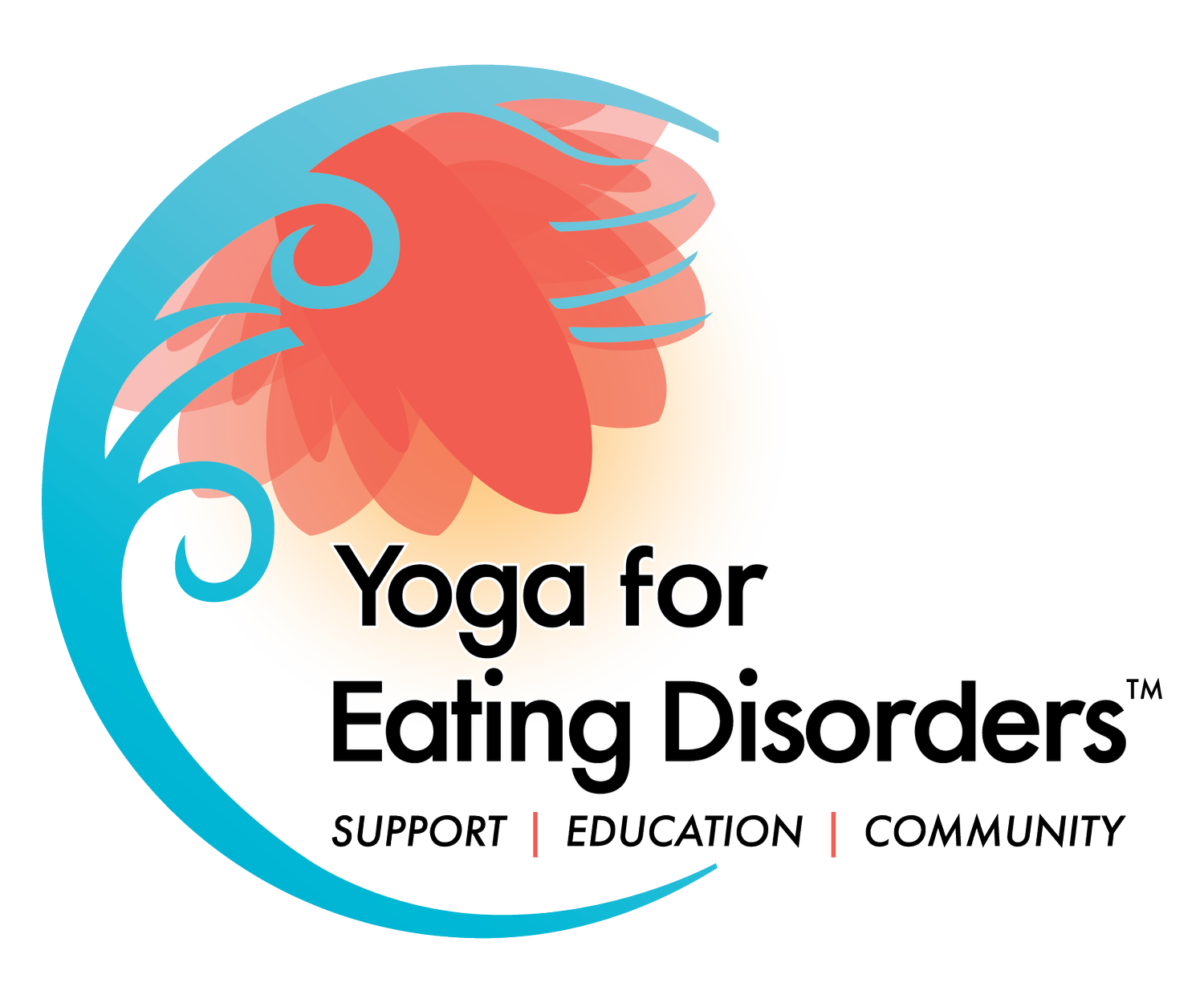Inner Child Therapy: What Is It & How Can It Help You Find Body Peace?
By Maria Scrimenti, Guest Contributor
“I remember the first time I was called fat,” she said.
“I was 12 years old. My brother and sister and I were just playing like kids do, until my brother said I looked like ‘the fat lady in the circus’. And he did not mean it as a compliment.”
“How did that make you feel, as a 12-year-old girl, to be insulted like that?” I asked.
“I felt hurt. And scared that this meant my brother didn’t like me and wouldn’t want to hang out with me anymore.”
As kids, we develop core beliefs about the world.
We learn what is safe and unsafe based on how people treat us. For my client, at the age of 12, she learned that fat is unsafe.
This was her first introduction to the notion that fat is synonymous with unlovable and unattractive.
All human beings need love, safety, acceptance, and belonging in order to thrive.
At the age of 12, my client learned that being fat threatened her ability to get those needs met.
So she spent the rest of her life waging a war against any ounce of fat that dared to present itself on her body.
She suffered from eating disorders and body dysmorphia.
Now, at the age of 73, she is tired of it.
She came to me, a body image coach and nutrition counselor, because she wanted to call a truce and end the war with her body, but didn’t know how.
She is coming to terms with the fact that, no matter how hard she tries, she will always have fat on her body.
At this point, she’s tried every diet and weight loss hack in the books, so if one of them was going to work for her, it would have worked by now.
If weight loss just isn’t happening, then in order to feel comfortable in her skin, her option is to develop a new belief system about her body… one that helps her believe her body is good.
After a lifetime of body loathing, sounds like a pretty big ask, I know.
So where do we start?
In our first session together, I presented to her some alternative thoughts about her body. I suggested she try on beliefs like “my body is not a problem to be fixed” and “my body is the least interesting thing about me”.
She agreed.
2 days later, she texted me, having a meltdown after being triggered by trying on clothes that fit tighter than they used to.
I reminded her of the new beliefs we discussed in our session.
Her response was: "I really want to believe those. I’m just not there yet.”
Totally valid.
To support her in truly embodying these new beliefs, I knew we were going to have to dig a little deeper and go back a little further.
When we feel triggered as adults, it’s often not our adult self that is activated. It is our child self showing up, unable to regulate their emotions and less able to access rational perspective. It’s like your adult self is being hijacked by your child self, or your inner child. Often, your child self feels unsafe and needs to know they are okay before the logical reframes can sink in and stick. Nurturing the child part of you takes more than the ability to make it shut up by the force of logical thinking (Hestbech, 2018). A child needs kindness and care.
So, I walked my client through the following exercise:
Step 1. I asked her to visualize herself at the site where she was first impacted by the maladaptive belief (i.e. For my client, the belief is that fat is bad and she is 12 years old, playing with her brother and sister. I asked her to picture what she was wearing so that she could get a clear visual of her inner child in her mind’s eye.)
Step 2. I asked her to tap into how that experience feels for her 12-year old self. I told her to label the emotion as if she were the child (i.e. “I feel hurt, embarrassed, scared, ashamed of my body”).
Step 3. I asked her what her 12- year- old self needs that she did not get. Or, what does she need to be told that would change everything for her? Imagining herself as that 12-year old girl, she said “I need love. I need to know that my body is normal… that if it has fat on it, it’s ok.”
Step 4. Next, I instructed her to visualize her current adult self sitting beside her child self, putting her arm around her or giving her a hug, expressing compassion for how she is feeling, then offering her the new belief (the belief she wished had been instilled in her at that age). She said to her inner child “I’m so sorry you are feeling hurt, embarrassed, scared, and ashamed of your body right now. I want you to know I am with you. Your body is ok. You are ok.”
Step 5. Lastly, I prompted her to check in with her inner child. How does she feel now? “She feels supported, relieved, tended to, cared for, and loved. She feels less fear.”
After we completed this exercise, my client had effectively opened up a channel of communication between her and her inner child and had begun to develop a relationship with her. Now, next time my client experiences a body image trigger, she can identify that her inner child is showing up, and ask her, “How can I help, what do you need?”.
This will help her develop resilience and become competent in meeting her needs in real time, in healthy and effective ways.
If you can tap into your inner child and meet them with tenderness and compassion, over time you will have developed a whole new way of relating to yourself. As practitioners, when we are referring to your inner child, it is still you we’re talking about… a part of you, but still simply you (Hestbech, 2018). So, if you can learn to speak kindly to your inner child, you will be practicing being more gentle with yourself and less judgmental. Your self-talk begins to talk on a whole new tone.
As you self-soothe and make yourself available as your own caregiver, you quiet the voices of self-criticism.
Your quality of life will improve, as you experience more peace in your day- to- day.
You will be more likely to engage in health- promoting behaviors because you love and want the best for yourself, and want to support the parts of you that didn’t get what they needed before.
This is soul healing.
My client may not love her body yet, but as she practices self- compassion, she will learn to value and respect her whole self deeply.
She may not be able to go back and rewrite history, but she can start by involving her inner child in the conversation.
She can start by believing she is worthy of the same love and care she might show to a child.
At 73, she is fighting hard for peace, and from where I’m standing, she is well on her way.
References
Hestbech, A. M. (2018). Reclaiming the inner child in cognitive-behavioral therapy: The complementary model of the personality. American Journal of Psychotherapy, 71(1), 21–27. https://doi.org/10.1176/appi.psychotherapy.20180008
Maria Scrimenti is a Certified Intuitive Eating Counselor who helps women make peace with food and feel confident in their bodies without dieting. She specializes in "emotional eating", body dissatisfaction, and disordered eating such as chronic dieting and binge eating. She loves fresh flowers, singing and dancing around the kitchen, and leisurely Jeep drives through Nashville in the sunshine with the music loud. Essentially, she is passionate about living joyfully and freely and is dedicated to helping others live the same way. Maria has appeared on several podcasts and has been quoted in articles for PsychologyToday, PopSugar, Yahoo, MSN, the National Wellness Institute Journal, and more. She holds a Bachelor’s Degree in Exercise Science, and almost a decade of experience in the fitness industry with certifications in 7 different fitness modalities. She has completed 60 credit hours of Master's- level coursework in Counseling, is a Certified Health & Wellness Coach, and a fitness instructor at Vanderbilt University. She also completed the Yoga & Eating Disorders Mentoring Group in 2021. Maria adores her work and is on a mission to help women leave shame and “should’s” behind so they can embrace and connect to their truest, most vibrant selves. Follow Maria on Instagram @mariascrimenti.


